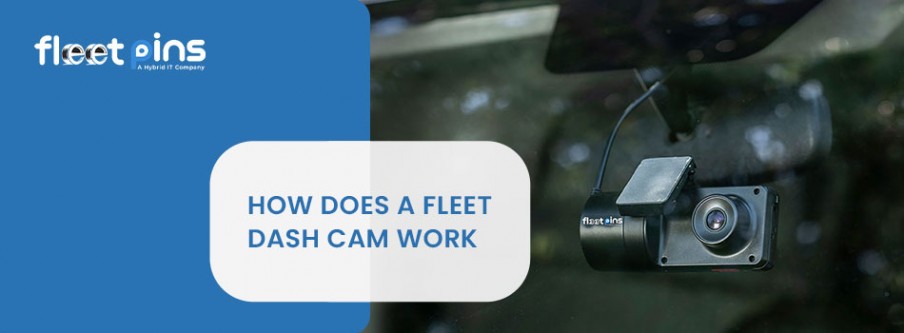
- On 2024-08-09
How Does a Fleet Dash Cam Work: A Complete Guide
Fleet dash cams, also known as dashboard cameras, are small, on-board video recording devices installed in vehicles. These cameras are essential tools for fleet managers, providing valuable insights into driver behavior, road conditions, and vehicle security. Understanding how a fleet dash cam works involves exploring its components, features, and the benefits it brings to fleet management.
How Does a Fleet Dash Cam Work?
Camera Lens and Recording Capabilities
The camera lens captures video footage in front of the vehicle. Some dash cams have multiple lenses to record both the road ahead and the interior of the vehicle. A microphone is often included to record audio, which can be helpful in understanding the context of incidents.
G-Sensor:
This is a built-in accelerometer that detects sudden movements like hard braking, rapid acceleration, or collisions. When triggered, the G-sensor ensures that the footage around the event is saved and protected from being overwritten.
Memory Storage:
Dash cams typically use SD cards or cloud storage to save recorded footage. The size of the storage determines how much footage can be saved before it's overwritten.
GPS Module:
Some dash cams are equipped with GPS to record the vehicle’s location and speed. This data is useful for analyzing driving patterns and providing evidence in case of accidents.
Power Supply:
Dash cams are usually powered by the vehicle’s battery through the cigarette lighter socket or a hardwired connection to the fuse box. Some dash cams also have a backup battery to continue recording even when the vehicle is off.
You May Also Read: How to Format an SD Card for Dash Cam?
How It Records and Saves Data
Continuous Recording
Most fleet dash cams continuously record while the vehicle is in operation. The footage is saved in small segments (e.g., 1, 3, or 5 minutes). When the storage is full, the oldest footage is overwritten by new recordings unless protected by an event like a collision.
Event-Triggered Recording:
The G-sensor triggers the camera to save footage when it detects sudden movements. This ensures that critical moments like accidents are preserved, even if the continuous recording is overwritten.
Manual Recording:
Drivers or fleet managers can manually start recording if they witness something noteworthy or need to document specific situations.
Live Streaming and Remote Access
Advanced dashcams offer live streaming, allowing fleet managers to view real-time footage. This is particularly useful for monitoring driver behavior and ensuring compliance with safety protocols. Fleet managers can access dash cam footage remotely via a mobile app or web portal. This feature is invaluable for reviewing incidents without waiting for the vehicle to return to the base.
Depending on the jurisdiction, there may be legal requirements regarding audio recording inside the vehicle. It’s essential to inform drivers and passengers that they are being recorded. The recorded footage is sensitive data and must be handled according to data protection laws. This includes secure storage and limited access to the recordings.
Choosing Fleet Pins for Dash Cam Installation
Selecting the right dash cam and installation service is crucial for maximizing the benefits of this technology. Fleet Pins is a reputable provider of dash cam solutions tailored for fleet management. Here are some reasons to choose Fleet Pins for your dash cam installation:
- Expertise and Experience
- Quality Products
- Professional Installation
- Ongoing Support
Conclusion
Fleet dash cams are invaluable tools for enhancing safety, reducing costs, and improving fleet management. They work by continuously recording video footage, triggered by events, and providing real-time access for fleet managers. With the right installation, maintenance, and understanding of legal considerations, fleet dash cams can significantly benefit any fleet operation.




